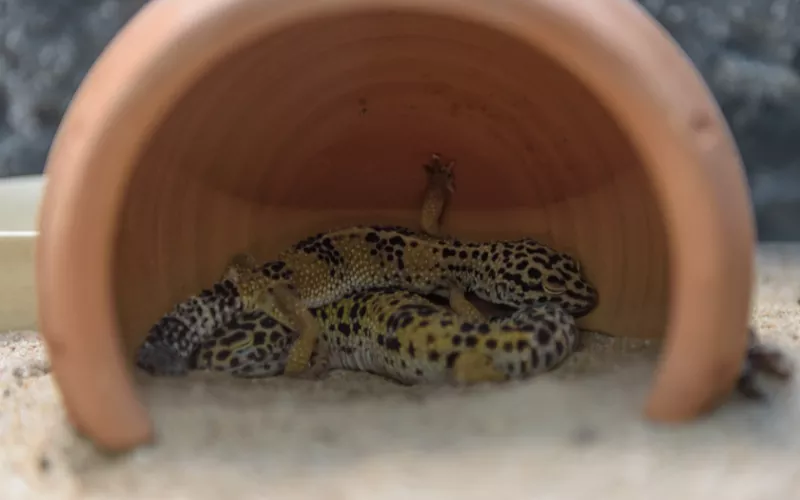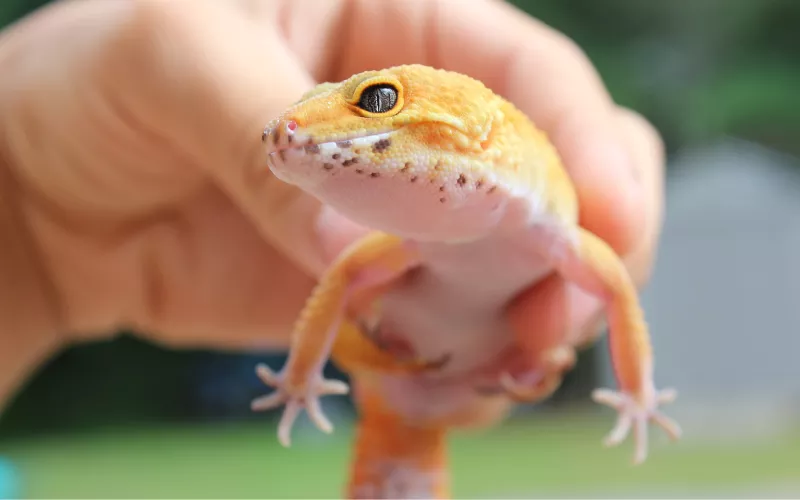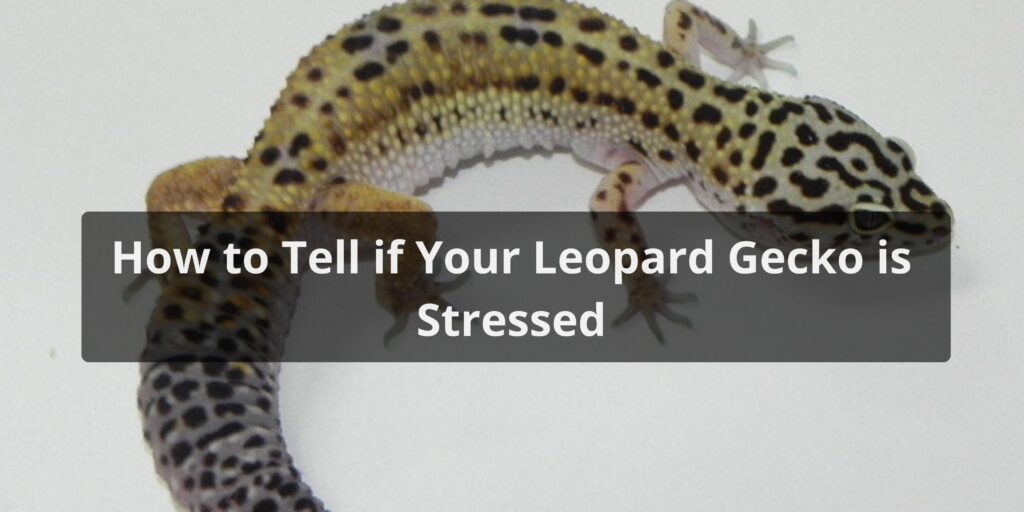Stress is a common issue for pet leopard geckos. While some stress is normal, chronic or excessive stress can lead to more serious health problems. As a responsible leopard gecko owner, it’s important to learn how to recognize signs of stress in your pet. This article will teach you how to tell if leopard gecko is stressed and offer tips on reducing stress levels.
Leopard geckos are generally hardy, easy-to-care-for reptiles. However, they can experience stress from things like improper housing, poor diet, over-handling, and other environmental factors. Prolonged stress weakens the immune system and can cause illness, appetite loss, and behavioral changes.
Knowing the common signs of stress will help you identify problems early and take steps to improve your leopard gecko’s quality of life. While some signs of stress are obvious, others are more subtle. We’ll discuss both below.
Physical Signs of Stress

Here are some of the most common physical indicators that your leopard gecko is stressed:
Weight Loss
- Significant or rapid weight loss is one of the most telltale signs of stress in leopard geckos.
- Stress causes appetite suppression, often leading to weight loss. Any noticeable drop in weight warrants attention.
Lack of Appetite
- Healthy leopard geckos are eager feeders. A sudden lack of interest in food, or only taking a bite or two, signals an underlying problem.
- Chronically stressed leopard geckos often go off feed entirely. Appetite loss lasting over 2 weeks is serious.
Digestive Issues
- Constipation, diarrhea, vomiting, and prolapses occur in stressed geckos.
- Stress hormones inhibit normal digestive function. This manifests in various digestive upset.
Increased Shedding
- Too frequent or poor sheds can indicate problems.
- Inadequate humidity, poor diet, and dehydration from stress all contribute to abnormal shedding.
Skin Discoloration
- Prolonged stress leads to faded or dulled skin color over time.
- Once underlying issues resolve, the skin’s natural vibrant tones return.
Poor Tail Condition
- Tail atrophy or “stick tail” develops from malnutrition related to chronic stress.
- The muscles and fat stores in the tail visibly deteriorate. Supportive care helps restore tail condition.
Behavioral Signs of Stress

Stressed leopard geckos also exhibit changes in normal behavior:
Hiding Excessively
- Healthy leopard geckos spend some time in hides but are also active.
- Excess hiding behavior signals a stressed, fearful gecko avoiding threats.
Aggression
- Typically docile leopard geckos may bite or lash their tails when threatened or stressed.\n\n* Handle an aggressive gecko minimally and identify stressors in their habitat.
Lack of Activity
- Stressed geckos often lose interest in climbing, exploring, and other normal activities.
- Lethargy or motionless basking indicates fatigue related to chronic stress.
Resistance to Handling
- Geckos stressed by overhandling will squirm, run away, or vocalize when approached.
- Give skittish geckos more space and handle gently to rebuild trust.
Poor Body Posture
- Depressed posture with “hunched” shoulders is an obvious sign of unwellness.
- Improper temperatures, substrates, or hides cause muscle tension from chronic discomfort.
How to Reduce Stress

If your leopard gecko exhibits multiple signs of stress, take proactive steps to identify and correct the source of stress. Here are some tips:
- Review husbandry practices – Improper heating, lighting, enclosure size, substrate, etc. are common stress factors. Analyze your setup.
- Limit handling – Overhandling is hugely stressful. Keep handling brief and gentle until your gecko relaxes.
- Check for illness – Undetected health issues manifest as stress. Have an exotic vet examine your gecko.
- Offer a proper diet – Nutrient deficiencies from poor diet contribute to stress. Feed a balanced, vitamin-rich diet.
- Add enrichments – More clutter, hides, branches, and decor help geckos feel secure.
- Maintain proper humidity – Low humidity causes dehydration and shedding issues. Provide a humid hide.
- Allow an adjustment period – After changes like new enclosures, relocation, or tank mates, allow 2-4 weeks for adjustment before handling.
Conclusion
Identifying and addressing the causes of stress is key to your leopard gecko’s well-being. While moderate stress is normal for captive reptiles at times, ongoing or excessive stress compromises their health. Knowing the common signs of stress equips you to spot issues early and take corrective action. With attentive care and a few habitat adjustments, your leopard gecko can live a long, happy life!
FAQs About How to Tell If Leopard Gecko Is Stressed
Are there specific environmental factors that stress geckos?
Yes, several environmental factors can stress leopard geckos, including incorrect temperature and humidity levels, overcrowded enclosures, inadequate hiding spots, excessive noise or handling, and sudden changes in their surroundings. Identifying and addressing these factors is crucial for reducing stress.
How can I create a stress-free habitat for my gecko?
To create a stress-free habitat, maintain consistent temperature and humidity, provide multiple hiding spots, use appropriate substrate, and ensure a quiet, low-traffic environment. Minimize handling and avoid sudden changes. Regularly clean the enclosure and monitor for signs of stress.
Does the presence of other geckos affect their stress level?
Yes, the presence of other geckos can affect their stress level. Leopard geckos are generally solitary, and housing them together can lead to territorial disputes and stress. It’s recommended to keep them separately to prevent aggression and stress-related issues.
Are there different stress indicators for juvenile and adult geckos?
While stress indicators can overlap, juvenile geckos may display stress through rapid movement and hiding. Adults might exhibit behaviors like reduced appetite, lethargy, and changes in skin color. Observing your gecko’s behavior and appearance can help differentiate stress in different age groups.
What should I do if I suspect my leopard gecko is stressed?
If you suspect your leopard gecko is stressed, review their enclosure conditions, ensure proper temperature and humidity, offer ample hiding spots, and minimize handling. Address any stressors and monitor their behavior closely. If stress persists or worsens, consult a reptile veterinarian for guidance and evaluation.




